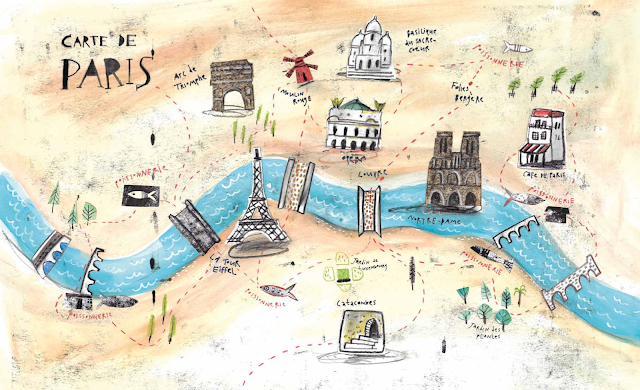The Incredible Record Smashers by Jenny Pearson, illustrated by Erica Salcedo (Usborne)
Once, in an interview with Shirley Hughes, I read about where she gets the ideas for her books. Having read about her observations of children from the life and then really seeing it in her work, there has been no un-seeing it since: the boldness of children, their reticence, their great joys and their deep sorrows are all there in Hughes' portraits, in the wave of an arm, the inclination of a neck, the pointing of a finger. When a Shirley Hughes picture book is opened, we immediately see not only children, but the child's world, too, through the child's own eyes. And there is no affectation, no sugaring the pill: childhood is an exhilarating time but a confusing and frustrating one too. We know exactly the excited anticipation of Christmas in one of her books but feel the same pain of losing a beloved stuffed toy in another.
Jenny Pearson's writing also has this quality. While her books deal with grief, depression and the troubles of youthful friendships, she provides hope for all her readers by setting out the strengths and resilience of children and the solace that only true friends and family provide. Reading her latest book, The Incredible Record Smashers - which tells the tale of Lucy, her mum, her best friend Sandesh and her eccentric Aunt Sheila - I was reminded again, 'this author knows kids really well!'. This time, though, Shirley Hughes kept popping into my head, too. There are moments in the book where, like Hughes, Pearson captures a fleeting glimpse of the very personal and interior world of the child. Hughes has an eye for this - you can see the emotion in the stance of her children - and it is her genius. With Pearson, its in the instantaneous shift from laughter to tears, the joys and frustrations of childhood, the wildly crazy view of the big, wide world around that touches on the very same artistry.
Pearson sketches out the frangible lines of children's relationships with a canny eye, too: the ways in which the bonds between children - uniquely strong and easily broken or mended in the blink of an eye - are brilliantly realized. In Freddie Yates, it is the weird scrap on the boat between the three boys; in Record Smashers, there's a scene which is at once bursting with anger, hilariously
comic, and completely deadpan, where Lucy throws a pre-teen tantrum, only for it to be somehow quashed then incensed
further with a bowl of washing-up water. Although Pearson clearly loves her characters, and has the deepest of respect for children, she is not afraid to point out their shortcomings - what's particularly lovely, though, is that this is always done with the kindest and gentlest of smiles.
 Let's not forget the way in which she paints her adult characters! Auntie Sheila is the eccentric, full-of-gumption, full-of-love grown up that every child needs in their life. She will inspire the young reader to laugh but also to think, especially about the ways in which love is shared and given. Other 'grown-ups', conversely...well, let's just say that in today's media-wow culture, we need books like Jenny's to prove that real life takes a lot more than celebrity or a TV show can ever provide.
Let's not forget the way in which she paints her adult characters! Auntie Sheila is the eccentric, full-of-gumption, full-of-love grown up that every child needs in their life. She will inspire the young reader to laugh but also to think, especially about the ways in which love is shared and given. Other 'grown-ups', conversely...well, let's just say that in today's media-wow culture, we need books like Jenny's to prove that real life takes a lot more than celebrity or a TV show can ever provide.
As with Freddie Yates, the plot is over-the-top, riotous, quite literally 'incredible'. But deep down, is it really? Admittedly, it's unlikely that two children would manage to find their way to a recording studio to present their latest crazy idea involving catching kumquats, simply to meet up with a guy who might just give Lucy's mum the seed of happiness that will grow to crush her depression - unlikely, yes, but to a child the logic of the plan is both immaculate and inspiringly optimistic: "Why shouldn't it work? Why couldn't it happen?" Again, it's Pearson's sensitivity to the tender inner lives of children and their overwhelming hope that nurtures her storyline here. Children will appreciate that, quite naturally, and be comforted as well as entertained.
While with every passing day all of our lives change and frantically adapt to suit the pressures of modern life, it's reassuring to see with Pearson - as it is with Shirley Hughes - that young people have their 'champions of childhood': brilliant storytellers who see perfectly clearly what it means (and has in fact always meant) to be a child in a confusing world and who are always ready to share their kindness with those attentive ears and eyes who read them; and listen; and see.
The Incredible Record Smashers by Jenny Pearson is published by Usborne on 4th March 2021.
The Guardian interview with Shirley Hughes is here: https://www.theguardian.com/childrens-books-site/2015/jul/06/shirley-hughes-interview-book-trust-lifetime-achievement
With thanks to Fritha Lindqvist for her help in the preparation of the pictures for this blog.















